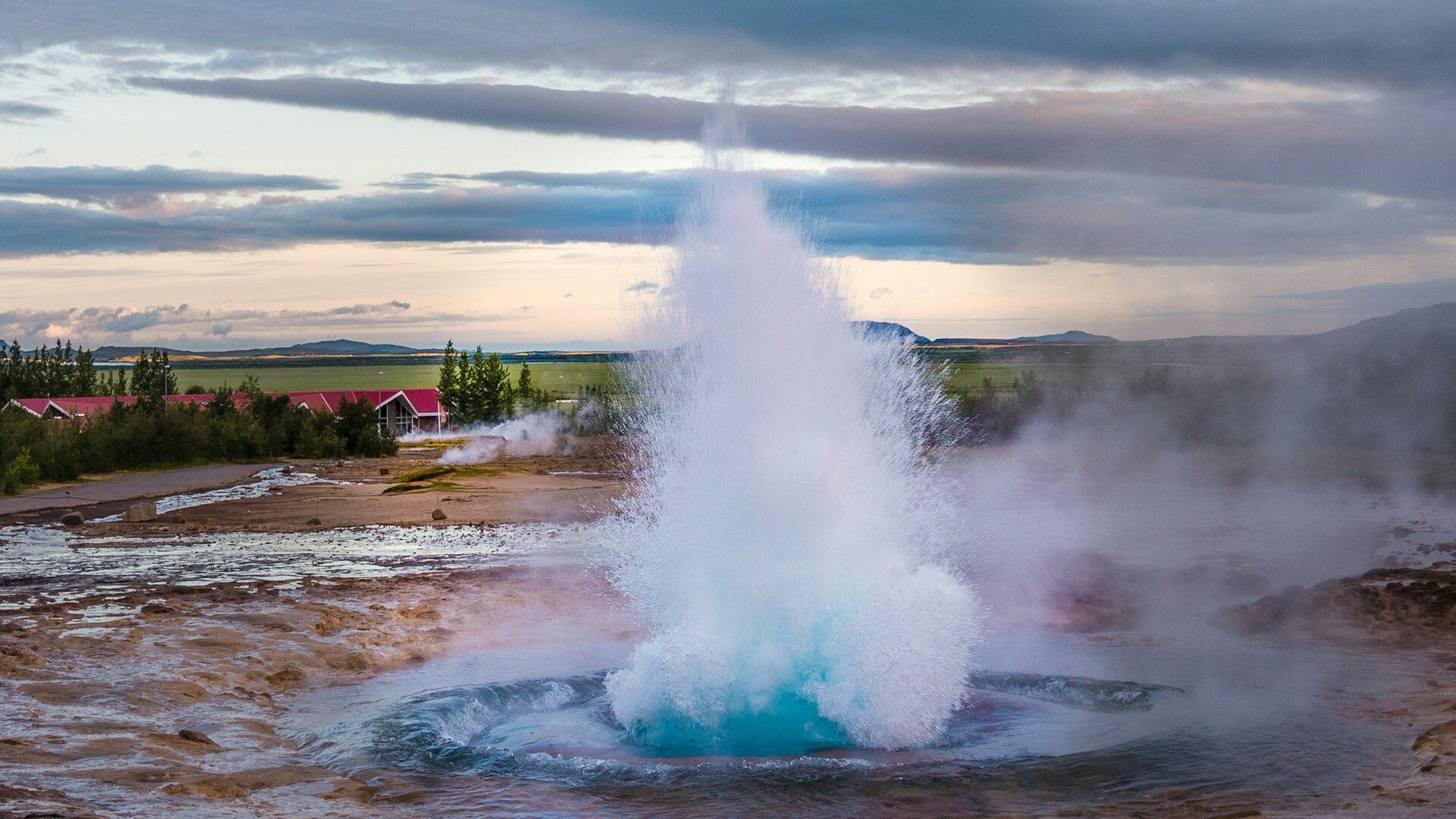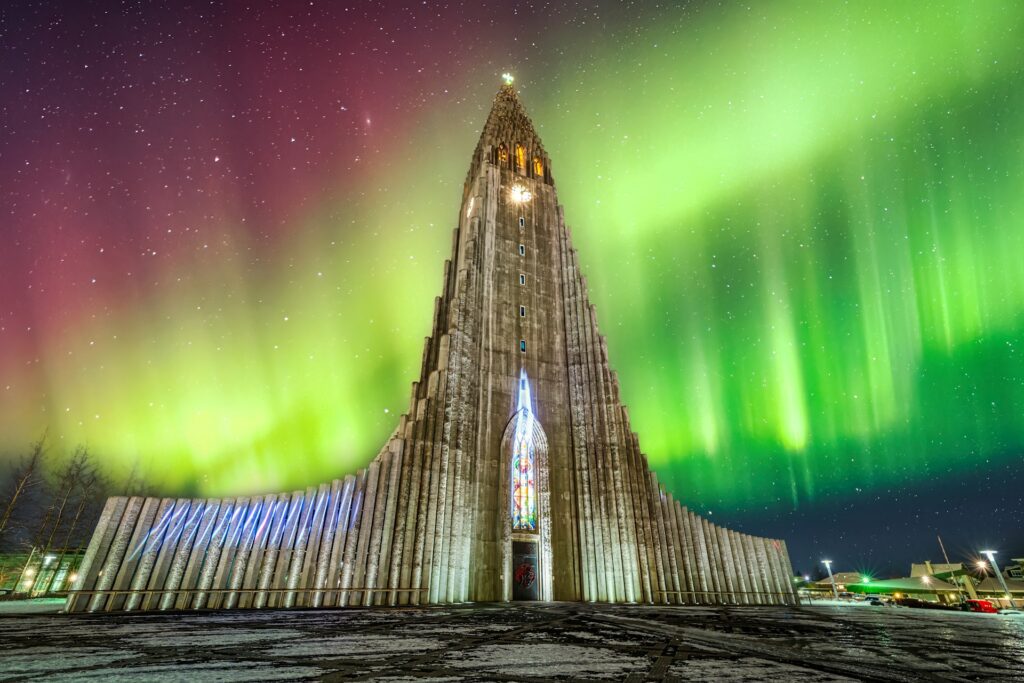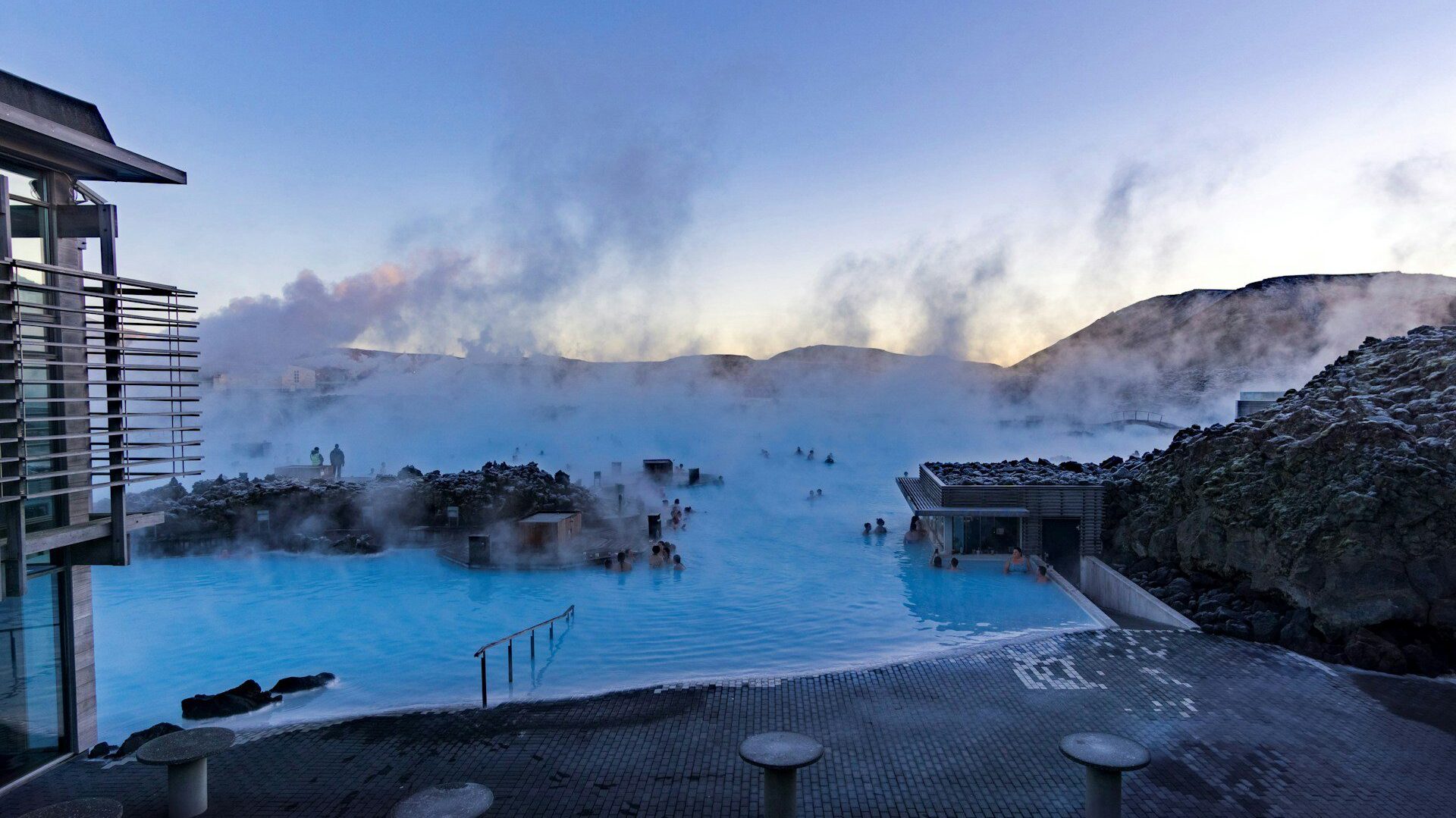Recently updated on April 30th, 2025 at 11:20 am
Mention Iceland and what probably springs to mind, apart from ice, is the image of a colour-strewn night sky. However, there’s much more to this diverse and fascinating land than the Northern Lights. Here are nine of the most convincing reasons to visit Iceland you might not have considered.
1. It’s full of geysers
Breathtaking mountains, monolithic glaciers, deep fjords – when it’s not standing there and looking pretty, Iceland’s landscape boils, churns and erupts. Visit the geothermal area of Geysir and you’ll see what we mean. It’s full of fumaroles, mud pools and, of course, hot springs. The most eye-catching is Strokkur, a fountain geyser, which erupts every 8-to-10 minutes, shooting a 20-metre jet of water and steam up into the air. In other words, bring a camera – and a waterproof poncho.


2. It’s (almost) always sunny in Iceland
Summer nights are unusually luminous in Iceland, particular in the north, where the sun never fully sets in June. This occurrence is known as the ‘midnight sun’. It’s an occurrence mind, not a phenomenon; why it happens isn’t a mystery – the 23° tilt of our planet leaves the northern and southernmost reaches of the globe with long stretches of unremitting sunlight. Similarly, locals aren’t likely to share your bewilderment when you ask them, “but how do you sleep?” (“well, we have curtains” is the likely answer). Nevertheless, the midnight sun is magnificent, especially on Grimsey, an island on the Arctic Circle, where the sun travels horizontally across the horizon – and for summer babies, is one of the topreasons to visit Iceland.
Read next: 10 hilarious Icelandic sayings and phrases
3. It’s home to Hallgrímskirkja
Hallgrímskirkja, Reykjavik’s 75-metre high cathedral, can be seen from just about anywhere in the city – and on a fair few ‘I Love Reykjavik’ postcards too. Its corrugated concrete columns were inspired by the pillared shapes that form when lava cools into basalt rock, reflecting architect Guðjón Samúelsson’s love of Iceland’s natural landscape. Standing guard at the foot of the cathedral is a towering statue of Leifur Eiriksson, the intrepid Icelander, said to have discovered North America in 1,000 A.D, some 500 years before Christopher Columbus. The big thrills continue inside with a colossal, 5,275-pipe organ.


4. It has a golden waterfall! Well, sort of…
Staring up at a mysterious, multi-coloured night sky, visitors to Iceland could be forgiven for thinking, “there’s something in the water”. There isn’t – but the water does have something about it, particularly at Gullfoss (image above title), where it crashes, plunges and glows gold. After a slow start at the Hvitá river, it races along a three-step staircase, before making a 32-metre drop down a further two tiers into a rugged canyon. Unlike brownish glacial steams, the waters of Gullfoss are said to have a golden hue on a sunny day (Gullfoss means ‘Golden Waterfall’). If you’re lucky, you may even see a rainbow shoot across the falls.
5. It has produced trailblazing women
In 1980, Vigdís Finnbogadóttir was elected Iceland and Europe’s first female president. She remained in office until 1996 and still holds the record for the longest-serving female head of state of any country in the world. Not to be outdone in the trailblazing stakes, Jóhanna Sigurðardóttir became Iceland’s first female Prime Minister and the world’s first openly gay head of government in 2009. She also happens to be Iceland’s longest-serving Member of Parliament.
Read next: 18 interesting facts about Iceland
6. It has the world-famous Blue Lagoon
In 1976, Icelanders must have had the phrase ‘waste not, want not’ in mind as they stripped off to bathe in a newly-formed pool in Grindavík, the by-product of leaking water from a nearby power plant. Since then, the pool has been treated, superheated and rebranded as the Blue Lagoon, and is one of many people’s top reasons to visit Iceland. The water has a teal-like hue, while tumbling steam clouds create a heaven-on-earth vista. However, the lagoon is more than a must-see – at a balmy 38°C and containing a mix of exfoliating muds, salts and blue-green algae, it’s a must-dip. What’s more, it’s surrounded by bars, saunas, steam rooms and restaurants. Being in hot water (or relaxing by it) never felt so good.


7. It’s home to the stunning Snæfellsnes Peninsula
Squeezing volcanoes, lava fields, springs, fjords and beaches of every colour into 100km, the Snæfellsnes Peninsula is heaving with geological splendour. The area is also home to a diverse array of birds, many of which can be seen perching on precarious cliffs. However, Snæfellsnes’ main attraction is Snæfellsjökull, a 700,000-year-old stratovolcano at the tip of the peninsula. Its summit is covered by a snowy glacier; while its flanks consist of pyroclastic cones. However, Snæfellsjökull is best known for its star turn in Jules Verne’s ‘Journey to the Centre of the Earth’.
8. It’s the second-happiest place on earth
According to the World Happiness Report (yes, it’s a real thing), Iceland is the second happiest country on the planet. The report looked into everything from peoples’ own evaluations of their lives and well-being, to GPD per capital, life expectancy and health. In all those aspects, Icelanders appear to be happy with their lot in life, in spite of the unremitting dark days and sub-zero temperatures in winter. In fact, they’re quite chipper about the weather. “If you don’t like it, wait 5 minutes” is a common saying, reflecting how an Icelandic snowstorm can turn into sunshine in an instant. If a vacation-sized dose of happiness isn’t one of the best reasons to visit Iceland, we don’t know what is.


It has given the world its coolest mayor
London had Boris Johnson, known for knocking over a child during a rugby game in China. Toronto had Rob Ford, known for knocking over a fellow city councillor during a heated council meeting. In the bulldozing-mayor stakes, Reykjavik can’t compete. However, it has produced arguably the world’s coolest mayor: Jón Gnarr. As a teenager, Gnarr played bass in a punk band called ‘Runny Nose’. During the 1990s, he gained fame as an actor and comedian. In 2009, with no political experience, he formed the Best Party, which, true to its name, swept to victory in Reykjavik’s municipal elections in 2010. During an eventful, four-year tenure as mayor, Gnarr attended 2010’s Gay Pride parade as a drag queen and appeared in a Christmas video dressed as Darth Vader wearing a Santa Claus hat. It may not be one of the best reasons to visit Iceland, but it’s a bit of trivia that will go down well with the locals.